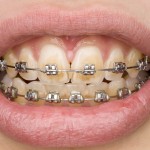
Orthodontic tooth movement is achieved through the application of light forces to the teeth. This may be associated with some pain and discomfort which can lead to some patients discontinuing treatment. Nonsteroidal anti-inflammatory drugs in particular ibuprofen and paracetamol/acetaminophen are commonly used for the management of orthodontic pain.
The aim of this review was to assess the efficacy of analgesics on the relief of pain in orthodontic treatment.
Methods
Searches were conducted in the Embase, Medline, Cochrane Central Register of Controlled Trials (CENTRAL) and the World Health Organization International Clinical Trials Registry databases. Randomised controlled trials (RCTs comparing nonsteroidal anti-inflammatory drugs (NSAIDs) against placebo for orthodontic pain were considered. Pain perception measured using either visual analogue scale (VAS) or a questionnaire was the main outcome measure. Two reviewers independently selected studies extracted data and assessed study quality using the Cochrane Risk of Bias 2 tool. A random effects meta-analysis was conducted.
Results
- 12 RCTs involving a total of 586 patients were included.
- 3 studies were considered to be at low risk of bias, 2 at unclear risk and 7 at high risk.
- Meta-analysis (9 studies, 393 patients) comparing ibuprofen with placebo showed ibuprofen to be more effective than placebo at 2 h, 6 h and 24 h respectively
- Standard mean difference (SMD) at 2 hrs = − 1.10 (95%CI; -1.49 to− 0.71),
- SMD 6 hrs = − 1.63 (95%CI; -2.32 to − 0.95).
- SMD 24 hrs = − 1.34 (95% CI; -2.12 to − 0.55).
- Meta-analysis (5 studies, 316 patients) comparing acetaminophen with placebo showed significant pain relief in favour of acetaminophen
- SMD 2hrs = − 0.68 (95%CI; -1.14 to − 0.22).
- SMD 6 hrs = − 1.34 (95%CI; -1.93 to − 0.74).
- SMD 24 hrs = − 1.91 (95% CI; -2.87 to − 0.95).
- Meta-analysis (4 studies, 17 patients) showed naproxen to be significantly better than placebo
- SMD 2hrs = − 1.45 (95%CI; -2.72 to − 0.19).
- SMD 6 hrs = − 2.11 (95%CI; -3.96 to − 0.26).
- SMD 24 hrs = − 1.90 (95% CI; -3.33 to − 0.009).
Conclusions
The authors concluded: –
….the use of analgesics is effective for patients in controlling orthodontic pain. Ibuprofen and naproxen are both of stable analgesic effect which could peak at 6h, while the analgesic effect of acetaminophen increases steadily from 2 h through 24 h. And naproxen shows a stronger analgesic effect either at 2 h or 6 h, and its effect lasts to 24 h compared with ibuprofen and acetaminophen. More well-designed RCTs about long-acting NSAIDs and COX-2 inhibitors will be needed to draw a comprehensive conclusion.
Comments
We last looked at the pharmacological management of orthodontic pain in 2016 in the findings from a Cochrane review (Dental Elf – 6th Dec 2016) which concluded not unsurprisingly that,
Analgesics are more effective at reducing pain following orthodontic treatment than placebo or no treatment.
The findings of this new review are similar although it only includes 12 RCTs compared with the 32RCTs that are considered in the Cochrane review. None of the studies included in this review provide any direct comparisons between analgesic agents. The Cochrane review reported very low-quality evidence that pre-emptive ibuprofen provided better pain relief that post treatment ibuprofen. Additional RCTs involving direct comparisons would be helpful as would cleared information regarding timing and dosage regiments. Cochrane reviews have also examined non-pharmaceutical approaches for the control of orthodontic pain (Dental Elf – 6th Jan 2017) although the findings were inconclusive.
Links
Primary Paper
Cheng, C., Xie, T. & Wang, J. The efficacy of analgesics in controlling orthodontic pain: a systematic review and meta-analysis. BMC Oral Health 20, 259 (2020).
Other references
Dental Elf – 6th Jan 2017
Pain during orthodontic treatment: non-pharmacological interventions
Dental Elf – 6th Dec 2016
Pain during orthodontic treatment –pharmacological treatments
